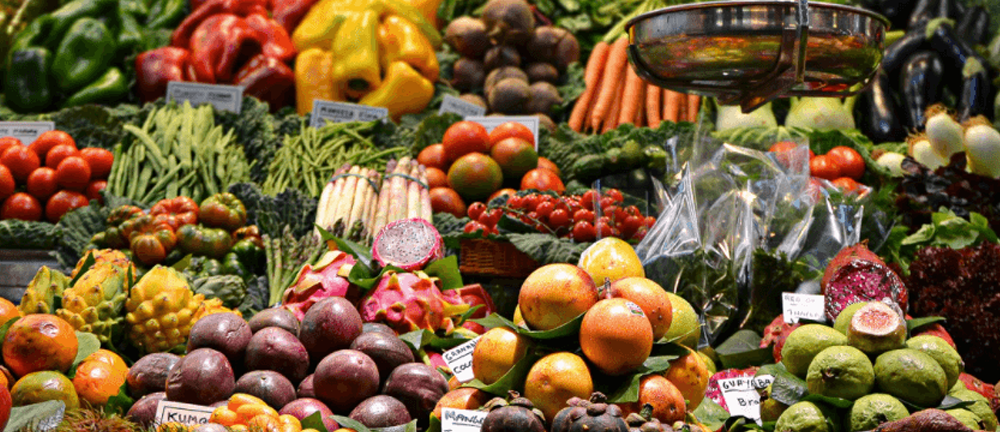The illusion of food democracy
There are many things in life that we can do without—but food is not one of them. Along with food we need water, shelter, clothes and warmth to have any chance of survival as a species.
And yet we often take food for granted, and many don’t even consider too much where food comes from, or what it contains, or who has food and who hasn’t. As long as we can do our weekly shopping and have enough in the fridge to feed our children and ourselves, then, other than the price of it, further considerations are well down the scale of priorities.
The history of food, though, shines an interesting light on the historical-material development of the human race.
About 12,000 years ago we were still “hunter-gatherers” of our food. We lived off the fat of the land, and it was free. About 10,000 years ago we developed farming and food surpluses. This had the effect of bringing about more permanent settlements, a major change in human survival strategies.
Rightly or wrongly, the Sumerian priests in Mesopotamia (4500–1900 BC) have been credited with the development of trading, weights and measures, and buying and selling. Once farming techniques developed sufficiently there was extra food after the family was fed. This meant it could be traded for other goods or for money. Once this happened, food was now a commodity.
Over the centuries since then, up to the present, humans have traded food of all sorts and varieties. Trading food inevitably meant there were to be winners and losers.
But food was also to become a weapon in the earliest of human confrontations. Many a besieged city, stronghold or territory witnessed its inhabitants surrendering to their attackers because of starvation from food blockades. It surely featured in slavery, when slaves received food as payment and were fed only enough to keep them and their families alive for the purpose of retaining the labour force. They never benefited financially from the profits of food production: that was sold on by the slave-owners.
During feudalism the situation was similar: the serf was allowed enough land to feed his family. He worked one or two days for himself and the rest for the lord, who owned the means of production: the land and tools. No proper financial reward from the fruits of his labour for the serf in this case either.
The class war, though not yet expounded on, was alive and well. Profit and power have no mercy, even where human sustenance is concerned. Human history has seen countless famines, when those who own the means of production and distribution continue to profit while millions die.
And still, in the twenty-first century, one of the biggest causes of death and poor human health is lack of food, compounded by cheap, poor-quality food, even though we have the science and the machinery for producing vast amounts of food. However, the advanced science and technology is not for producing affordable, nutritious food for everyone but for maximising profits, especially for retail giants and food manufacturers.
Farmers are caught in this capitalist trap too, just as the consumer is. Factory farming, where animals, fowl and fish are kept caged or housed in unnatural conditions, is the newest way for farmers to try to beat the squeezing of prices by the transnational food companies. To speed up the process of raw food production, “medicines” of all sorts are used in the drinking-water, with the heavy use of chemicals on land and in feeds, again not to increase food quality but to enhance profits.
But the adulteration of our food does not end there. The biggest and most profitable side of food production now is not the production of raw food but of food ingredients. Enzymes, artificial flavourings, artificial colouring, artificial smells, even food texture can be created artificially. Food can even be made from carbon dioxide. In a food laboratory a long-dead woolly mammoth could be made to look and taste like an Aberdeen Angus steak. But from an economic, health and, especially, a climate viewpoint it’s a race to the bottom.
Already Dutch scientists (among others) are actually growing meat in a laboratory from meat cells. No doubt vegetables, chicken and fish are heading for the Petri dish too. Is this the new opportunity for those who own the patents for this process to profit without the costs of farming? Will Tesco, ASDA, Lidl, Supervalu etc. all have their own in-house artificial food laboratories? Will they produce, at will, cheap food for the poor and better food for the rich? and control fully the means of production and distribution of food?
Who will this benefit—the consumer or the profiteer who owns all the patents? And what does it say to us about the struggle for food democracy or food sovereignty?
Over many centuries, and continuing now, humans have been divorced from their natural sources of food. They have lost access to the means of production and the ownership of their food—the land. Subsistence farming and small or even medium-sized farms were made no longer financially viable by the race to centralise food production for profit. Urbanisation, the lure of a job and access to cheap food off the shelf, with no effort, hastened the demise of access to food sovereignty.
Can this position be reversed?
We have watched on our television screens the frightening images of starving people around the world, and this has spawned many calls for food democracy—the right to food. Clearly these demands have been ignored. The question arises then: Is it a case of “the right to benefit” or having “the ability to benefit.”* Who ensures the “right to food”? The state? But sure they are “the committees of the rich”: they take the side of capital.
A major issue that food democracy groups or social movements tend to ignore is the factor of state and class associated with the production, private ownership and access (or not) to food. Civil society groups calling on the state to regulate capitalist food production won’t do it either: the state is complicit. About ten global companies control the production and distribution of food in the world. They are “food imperialists,” who exploit producers, especially in the developing world, and together have more power and political leverage than most governments or states.
So the neoliberal capitalist food monopolies and their financiers cannot be ignored, or just talked away. Minimalist concessions engineered between states and the food monopolies will only ever be window-dressing and never a permanent solution to food sovereignty. And while people may enjoy working with food co-operatives in community-led vegetable plots—and get good-quality, tasty food—it doesn’t answer the central question: How do we tackle the issue of the absence of real food democracy, or food sovereignty, for everyone?
With nearly a million tonnes of food waste per year in the world, and millions upon millions of people malnourished, hungry, or starving to death, it means that something is seriously wrong with the concept of the “right to food.” But trying to build a campaign for true food sovereignty by looking at it from the viewpoint of “the people versus the food monopolies,” with the state as the honest arbiter, would be very naïve and fruitless.
Any serious campaign for real food sovereignty must consider that the state will use hegemony, coercion, imprisonment, co-option and division to defeat those who recognise that the underlying issue is the “state-capital” consensus on the ownership of private property, along with control by capital of the means of production and distribution.
Educating people through a radical transformative campaign for food sovereignty might give “food for thought” and add to the dynamics for a people’s participatory political and economic democracy and, eventually, an end to capitalism.
*Jesse Ribot and Nancy Lee Peluso, “A theory of access,” Rural Sociology, vol. 68, no. 2 (June 2003).






